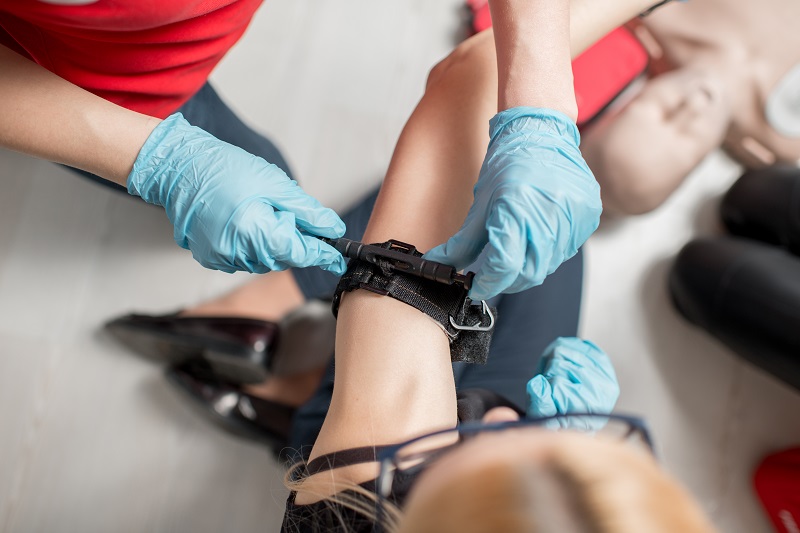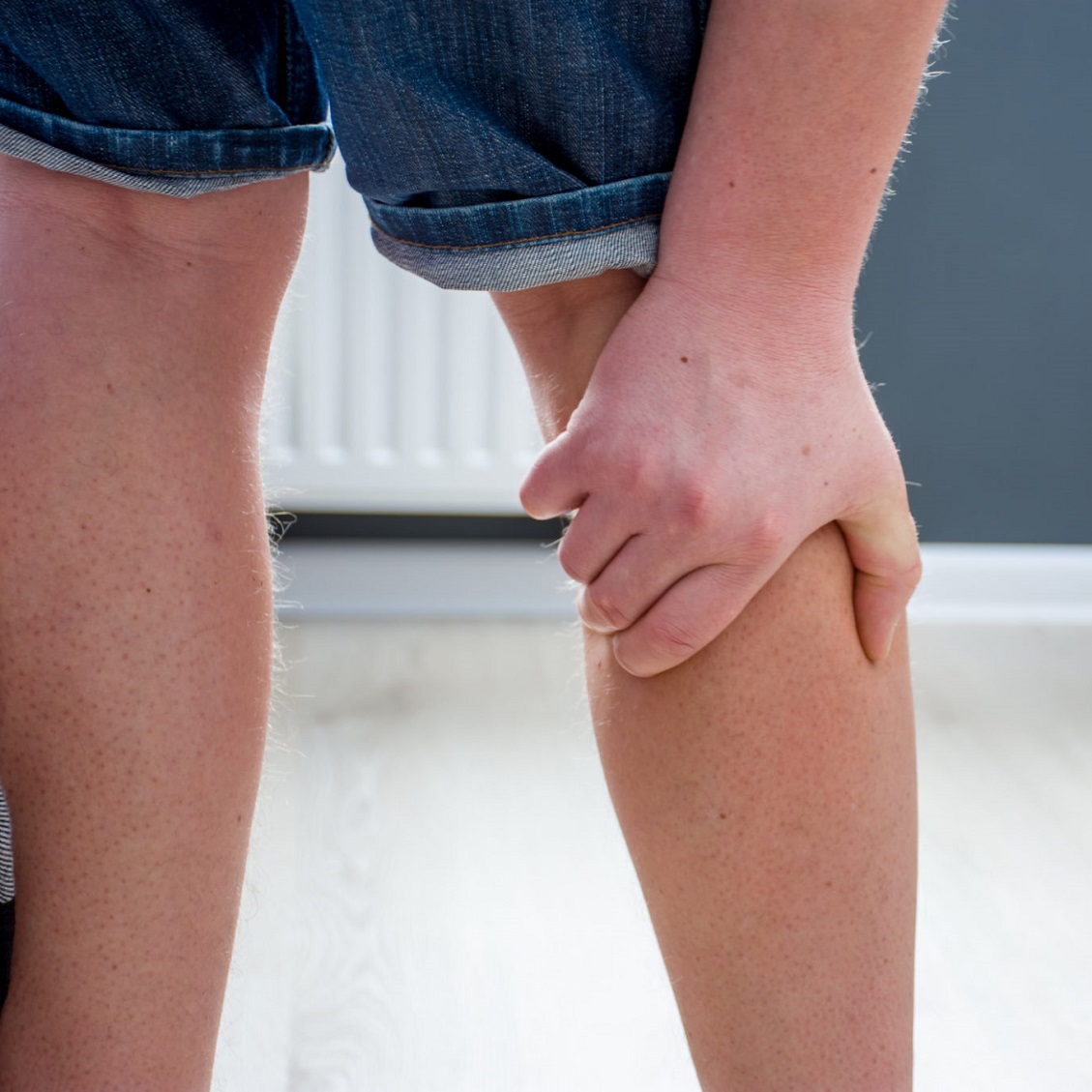Know How to Stop the Bleed

April 22, 2021
Updated: 6/5/2021
At any time, an accident, natural disaster or other emergency situation can result in you or someone near you experiencing an injury with extensive bleeding. Because bleeding is the number one cause of preventable death after injury, it’s good to be prepared with the knowledge and tools that can help save your life or someone else’s.
If someone around you is experiencing bleeding, follow these steps.
1. Make sure you are safe.
If the situation is unsafe, move to safety, taking the victim with you if you’re able and uninjured. Once you know you’re safe, call 911.
2. Find the source of the bleeding.
The location of the injury dictates whether you will be able to use a tourniquet or need to pack the wound and/or apply pressure.
- If the injury is on the neck, armpit or pelvic area: For areas that can’t be bound with a tourniquet, pack the wound with either gauze or a clean cloth, such as a T-shirt, and apply pressure. The other areas, such as your chest to abdominal region, cannot be bound or packed, and the best thing you can do is alert first responders upon their arrival of the person’s injuries.
- If the injury is somewhere on the upper or lower extremities: If the injury is on the arm or leg, a tourniquet is the best option. A tourniquet is a device used to apply pressure to a limb or extremity to limit blood flow. Some public sites have Stop the Bleed kits where their AED kits are located, which contain tourniquets. If you don’t have a professional tourniquet, a belt or tie can be used, but a real tourniquet is far superior.
3. Once a wound is fully packed, apply pressure and hold.
Don’t check to see if bleeding has stopped, wait until help arrives before removing pressure. The same goes for a tourniquet: Do not remove after placement.
What Is 'Stop the Bleed'?
Stop the Bleed is a national awareness campaign and call to action presented by the American College of Surgeons and Department of Defense. It is intended to cultivate grassroots efforts that encourage bystanders to become trained, equipped and empowered to help in a bleeding emergency before professional help arrives.
No matter how rapid the arrival of professional emergency responders, bystanders will always be first on the scene. Those nearest to someone with life-threatening injuries are best positioned to provide first care.
Next Steps & Resources:
- Hackensack Meridian Health offers Stop the Bleed training courses to community locations, including schools, the work place, senior centers and to groups such as scouts. In these courses you will learn how to pack wound, the use of a tourniquet or makeshift tourniquet, and how to apply direct pressure. The classes are under two hours and free of charge. To coordinate a training near you, contact Tracy Nerney, BS, MMBA, RN, Trauma Injury Prevention Coordinator: 732-776-4515
The material provided through HealthU is intended to be used as general information only and should not replace the advice of your physician. Always consult your physician for individual care.






